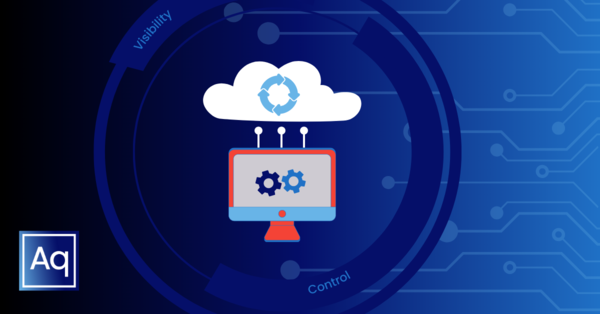The Benefits Of Using SaaS Security Posture Management (SSPM)
Exploring what SSPM is and the benefits of leveraging it in your security stack

Until a few years ago, most business applications and data were hosted on-premises. Setting up the infrastructure and supporting a business application were significant aspects of my previous position as a systems administrator. While this placed all of the responsibility for security on the operations team, it was clear what needed to be secured and how to do it. Local and well-known infrastructure was in place.
More recently, the landscape has changed. Businesses have adopted the cloud and software as a service (SaaS) tools. The pandemic accelerated the adoption of the cloud and SaaS solutions across the board and has created unique challenges for security and internal ops teams.
SaaS Security Posture Management (SSPM) is an approach to address this challenge that is gaining traction in the industry.
What Is SSPM?
SSPM is a security management approach of proactively identifying and addressing potential security vulnerabilities in software applications that are delivered to customers over the internet. In other words, it provides visibility and control over the security of SaaS applications to security teams within their environments.
With the increasing adoption of SaaS solutions in business environments, it’s more important than ever to make sure that these applications are secure, in order to protect sensitive data and reduce the risk of security breaches.
SSPM insights are crucial as cyber threats are constantly evolving, and it’s vital for SaaS companies to stay up-to-date on the latest security practices in order to protect their customers’ data and maintain the trust of their user base.
Examples of insights from SSPM tools include:
- Identifying and assessing potential misconfigurations within the SaaS tool (admin access, etc.)
- Monitoring for unusual activity
- Implementing security controls to protect against threats
- Ensuring compliance with regulatory requirements
Key Benefits of SSPM
One of the main benefits of SSPM is that it allows organizations to identify and address potential security risks before they can be exploited by attackers. This can be done by conducting regular security assessments of SaaS applications, as well as monitoring for any changes in the security posture of these applications over time. Additionally, SSPM can help organizations monitor security controls that are tailored to the specific needs of their SaaS applications, such as encryption of sensitive data in transit and at rest, and multi-factor authentication settings.
Another key benefit of SSPM is that it helps organizations comply with various regulatory requirements related to data protection and security. For example, many industries are subject to strict regulations when it comes to handling sensitive data, and SSPM can help organizations to meet these requirements by ensuring that their SaaS applications are secure and compliant. Think of the medical and healthcare industries. Millions of patient records, including highly sensitive data like social security and payment details, are processed by healthcare organizations. The need for more secure data in the healthcare sector has increased with the transition to electronic records.
SSPM also helps organizations demonstrate security effectiveness to auditors and other stakeholders. Reporting and alerting are built into SSPM tools and security teams can leverage those features to demonstrate effectiveness. Automating reports, dashboards, and email notifications allows for a proactive approach to their security risks, as opposed to reactive, which is often costly and less effective.
Conclusion
Wrapping up, SSPM is a vital practice for organizations, as it helps to protect sensitive data and reduce the risk of security breaches. It allows organizations to identify and address potential security vulnerabilities in SaaS applications, implement security controls tailored to the specific needs of their applications, and ensure compliance with various regulatory requirements. Lastly, it allows security teams to demonstrate the effectiveness of the controls to auditors and stakeholders. With the current trend of more and more organizations adopting SaaS solutions, it’s essential to take a proactive approach and adopt SSPM to ensure the security and compliance of your SaaS applications.
If you have any questions, or would like to discuss this topic in more detail, feel free to contact us and we would be happy to schedule some time to chat about how Aquia can help you and your organization.

